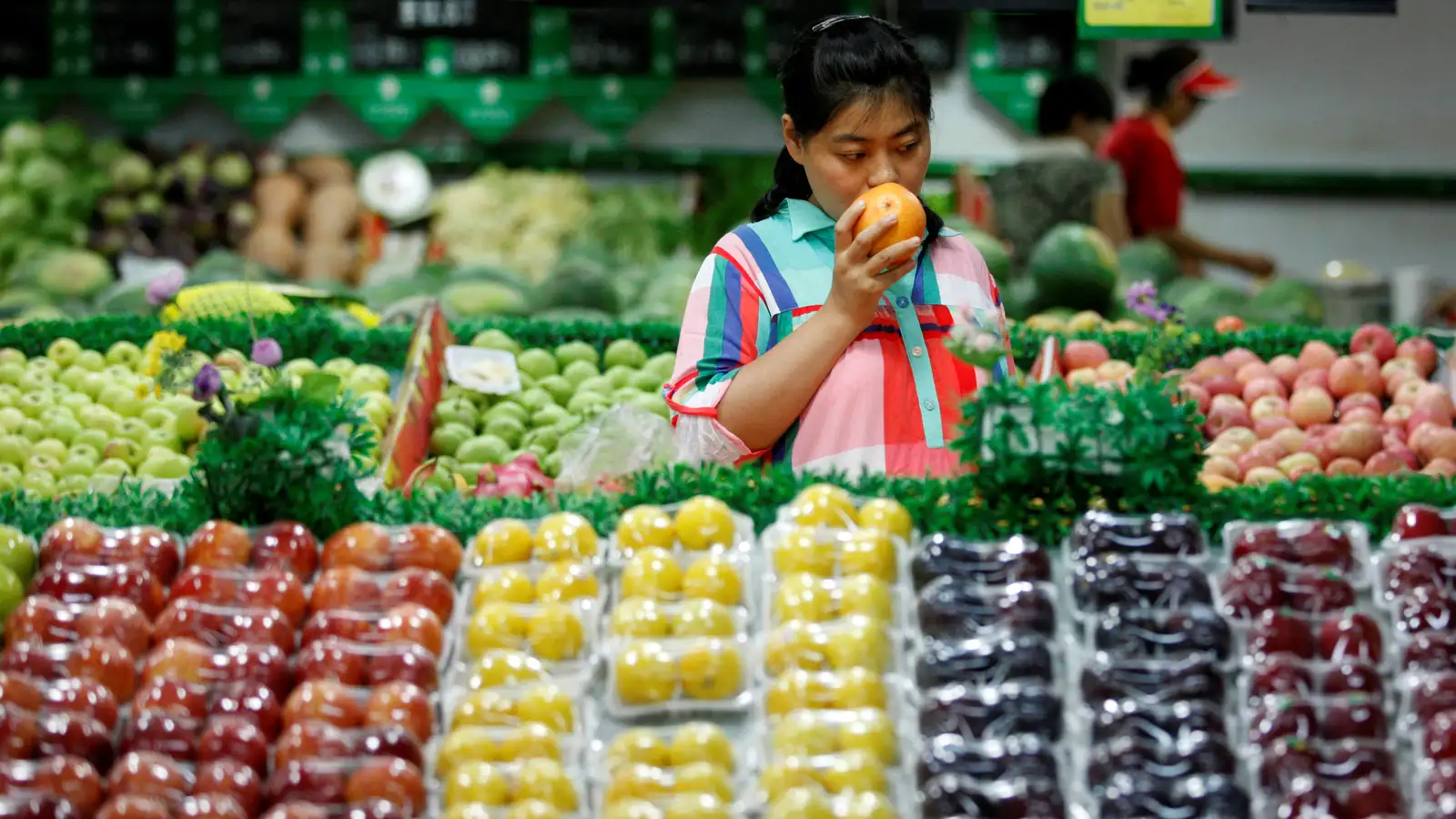China’s economy remains under deflationary pressure, with consumer prices falling for the second consecutive month and producer price deflation deepening, as exporters brace for further challenges amid rising trade tensions with the United States.
Data released Thursday by the National Bureau of Statistics showed the Consumer Price Index (CPI) declined 0.1% in March from a year earlier. The drop follows a 0.7% contraction in February, keeping the index in deflationary territory. Reuters had expected consumer prices to remain flat year-on-year.
Producer prices extended their losing streak to 29 months, falling 2.5% in March compared to the same period last year. This marks the steepest decline since November 2024, and was worse than the 2.3% drop forecast in a Reuters poll.
Core inflation—which excludes volatile food and energy prices—offered a glimmer of resilience, rising 0.5% after a 0.1% dip in February. However, it still lagged behind January’s 0.6% growth.
“We are more likely to see a divergence between consumer prices and producer prices,” said Tianchen Xu, senior economist at the Economist Intelligence Unit. “Core consumer prices have shown signs of picking up while producer prices are set to deteriorate given trade disruption.”
“Chinese exporters are essentially competing for a smaller global market,” Xu added.
The data comes on the heels of a sharp escalation in the U.S.-China trade war. U.S. President Donald Trump raised tariffs on Chinese imports to 125%, up from 104%, prompting a swift response from Beijing, which imposed an 84% tariff on U.S. goods on Wednesday.
Bruce Pang, adjunct associate professor at the Chinese University of Hong Kong, said the figures suggest a “potential inflection point driven by policy stimulus measures, particularly initiatives aimed at boosting consumption.”
“With recent policy commitments to curb aggressive price-cutting and additional strategies to encourage household spending, the CPI is anticipated to exhibit further signs of a gradual recovery in the coming months,” Pang said.
He noted, however, that producer price deflation is expected to persist due to “uncertainties surrounding oil prices and external demand amid ongoing trade tensions.”
Following the data release, the onshore yuan hovered near multi-decade lows at 7.3469 per dollar, having touched its weakest level since 2007 earlier in the session. The offshore yuan dropped 0.23% to 7.3611 per dollar.
Despite economic headwinds, mainland China’s CSI 300 Index rose 1.6%, while Hong Kong’s Hang Seng Index surged 3.9%, lifted by a broader rebound in Asian markets.
In March, Chinese Premier Li Qiang delivered the government’s annual work report, identifying boosting consumption as the top priority for 2025 and targeting around 5% GDP growth.
“This is the first time in a decade that Beijing has given consumption such a high priority,” said Laura Wang, chief China equity strategist at Morgan Stanley. She pointed out that “consumption” was mentioned 27 times in the report—the highest count in ten years.
Li Daokui, Mansfield Freeman Professor of Economics at Tsinghua University and former advisor to the People’s Bank of China, told CNBC’s The China Connection that Beijing is preparing new stimulus measures focused on boosting domestic consumption.
“With rising tariffs levied by the U.S., Beijing will double or even quadruple its intensity of increasing domestic consumption,” Li said, predicting that “Within 10 days, we will see announcements from the State Council.”
In a move to accelerate domestic demand, Chinese policymakers in March doubled subsidies for a trade-in program to 300 billion yuan ($41.47 billion). The expanded initiative will now subsidize 15% to 20% of the purchase price of select products, including mid-range smartphones and home appliances—up from last year’s 150 billion yuan allocation.
With rising global uncertainties, officials have emphasized the need to shift focus inward. “China must focus more on domestic demand given the possibility of ‘new shocks’ to overseas demand,” said Shen Danyang, head of the drafting group of the Government Work Report and director of the State Council Research Office.






